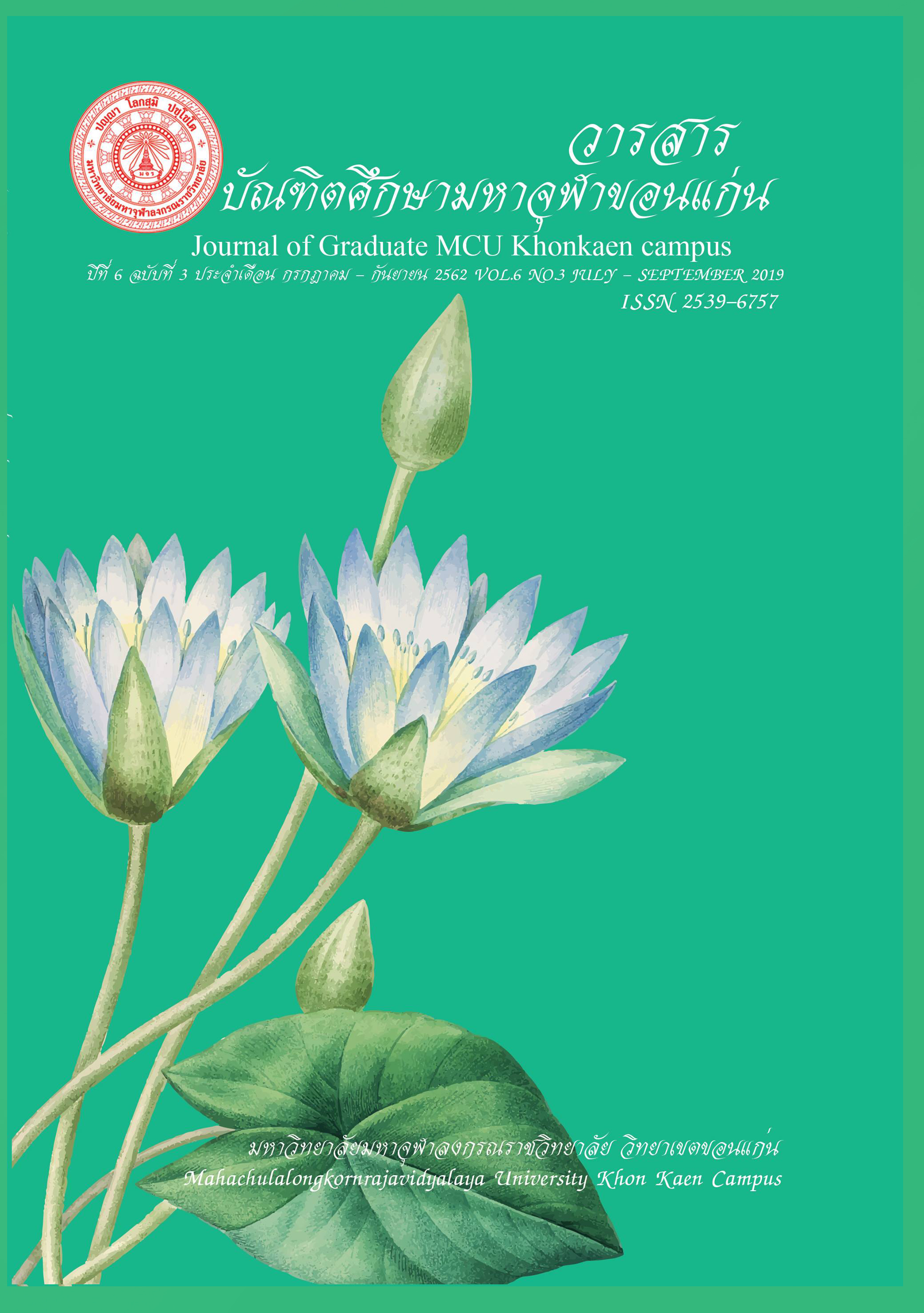Buddhist Tourism Management of Monasteries In Khon Kaen Province
Main Article Content
Abstract
This research article were: 1) to study the development of the temple and study the conditions of Buddhist tourism management of the temples in Khon Kaen Province; 2) to study the temple management in the province as the Buddhist tourist temples. This qualitative research was conducted through collecting the data from the observation and in-depth interview. The obtained data were interpreted by the descriptive analysis.
The research results revealed that the temple development related to Buddhist tourism has been positive as can be seen in Cetiyaphum Temple, in which the ancient Kham Kaen stupa is located, regularly restored, well decorated, peaceful and suitable as the tourism site for relaxing; in Nong Wang temple in which the Mahathat Kaen Nakhon stupa is located, built in the current era but mixed with Lan Chang style. In both stupas, the Buddha relics and Arahant relics are kept for the laypeople within and outside Thailand to page homage.
The conditions of Buddhist tourism management of the temples in Khon Kaen as seen in both temples mentioned above are similar as the temples have managed their peaceful, natural and clean environment which is appropriated for dhamma practices, meritorious performances: precept observation and mental cultivation. The temples have kept their restrooms clean, but not well enough managed the stores inside; the parking and seats are inadequate to serve the visitors and public relation is not widespread inside and outside the country.
The betterment of temple management in the province as the Buddhist tourist temples can be made by building more toilets and keeping the temples clean in the whole area, re-arranging the stores, increasing the car park, providing more seats, training the monks, novices and volunteers to be professional in public relation, continuously organizing the activities on the important Buddhist days and Heet Sip Song Khong Sip See cultures, appointing the monks, novices, staff, volunteers and guides to provide suggestions, knowledge and understanding about the stories of the temples such as painting, arts, Buddha history, I-san lifestyle, meaning of dhamma puzzles in the stupa and shapes of the stupas to the visitors.
Article Details
References
PattSupa Lilanaphon, "Tourism in Buddhistic approach: A case study of the cultural places in Bangkok", Master of Science, Graduate School: Nakhon Pathom: Mahamakut Buddhist University, 2008.
Tourism Authority of Thailand. Tourism Promotion Interesting. Bangkok: M.S.T, 2006.
Phra Brahmagunabhorn (P.A.Payutto), Buddhist Dictionary Vocabulary edition, Bangkok: Mahachulalongkornrajavidyalaya Printing School, 12th edition, 2008.
Sakchai SaiSing, Chedi in Thailand: Form of Development and Faith Power, Nonthaburi: Ancient City, 2017.

